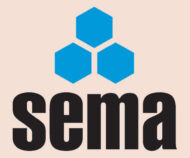The first question this month asks about regulations covering minimum aisle width and our second enquires about moving and testing cantilever racking.
 Minimum Aisle Width
Minimum Aisle Width
Q. Is there any regulation/guidance as to minimum distance between rows of racking/shelving for safe walking, retrieving of items (e.g. files) in respect to posture, manual handling, etc.?
A. There are few regulations covering this aspect as long as the aisle in question is not also an ‘escape route’. There is some guidance on minimum requirements in the building regulations and elsewhere however, this seems to have been derived on the basis that substantial items requiring storage would have their own risk assessment carried out before an aisle dimension was decided upon.
This approach does have some logic e.g. if a shelving system for record filing was being designed where a single operator of the system was filing a few sheets of paper at a time then a fairly minimal dimension could be acceptable. If on the other hand several people were required at the same time to operate the system and had a need to pass each other in the aisle while perhaps pulling or pushing trolleys of perhaps x-ray files or heavy ledgers then a totally different and much more substantial aisle width would be required. This would require more information on usage, dimensions of trolleys, etc.
All this is before the manual handling aspects of bending down or stretching up to place or retrieve a particular item is considered and again this would depend on the weight of the file concerned. Some will weigh very little while others can be several kilos, so this can be a fairly complex area which requires some clear thought together with an unambiguous definition of the proposed usage of the system at the design stage.
Moving and testing
Q. We are looking to move a few of our cantilever racks at the factory and wish to have it fully tested prior to use.
A. Load testing is a specialised task and is not to be undertaken lightly. It is not normal to carry out a load test on re located racking for two reasons. The first is that it is very expensive to do this and secondly if a failure occurs during the test then it can also be dangerous. Even if failure does not occur then the rack is being taken close to its failure point and some damage may result which might not be noticeable during the course of the test. Normally components of rack structures are tested in order to develop manufacturer’s load tables rather than full systems.
Before the rack is re-erected it would be a good opportunity to check the components for damage and a SEMA approved rack inspector who is qualified to inspect cantilever racking could do this. There is a list of suitably qualified people on the SEMA website www.sema.org.uk/find-sema-approved-rack-inspector/
If the original manufacturer of the racking can be identified then the normal approach would be to re-build the rack in accordance with the manufacturer’s recommendations and then fit a new load sign based on the manufacturer’s load tables.
If the manufacturer cannot be identified there are certain consultants who could calculate carrying capacities from first principles and provide a load notice for the rack based on these calculations.
The consultant approach is likely to be more expensive however, in the absence of being able to identify an original supplier, it is often the only option.
SEMA Technical Enquiries
If you have a query send it to us by email to tq@sema.org.uk and we will do our best to have it answered.
SEMA Rack Safety Awareness Inspection Courses
Aimed at end users, giving an in-depth look at the need for inspections, how to conduct an assessment and what actions to take when this is completed.
SEMA Approved Rack Inspectors Qualification
Aimed at professionals who conduct rack surveys as an integral and significant part of their duties. It involves delegates in undertaking an in-depth SEMA Course, together with an examination and practical assessment. CPD will be an important part of the qualification.
SEMA Publications
SEMA has 26 publications in stock – Codes of Practice, ‘Guides’ and European documents – all of which are available from our Offices.
SEMA




Comments are closed.